Every parent naturally desires that his/her baby should be healthy, chubby and intelligent. To enjoy good fruits one has to plan and work hard. For planning, both the parents must have sound knowledge about the normal baby and infant care in general.
1. Bathing baby – Benefits and Precautions
A. Why is it necessary to bathe the baby every day ?
In tropical countries like India, the baby should be given a bath every day with warm water. The water used should not be too hot as it may harm the baby’s delicate skin. In chilly winter or in countries with cold weather, it is not necessary to give a bath every day.
Right after birth, coconut oil or til (Sesame) oil is applied gently and the baby bathed in warm water. The mother should shut the door and windows to prevent draught. Bathing baby should preferably be done in the afternoon. The Indian style of giving a bath is ideal. The mother sits on the ground with legs extended and touching each other. The baby is kept on the legs with its face towards the ground so that the face and tummy of the baby are touching the mother’s legs and the nose lies in between the legs. Bathing baby can also be done in a plastic tub.
The advantages of Indian style of bathing baby :
-
The position of the baby avoids entry of water into the nose and mouth.
-
Even if the baby becomes slippery after the application of soap, there is no question of fall as the baby is practically touching the ground between the legs of the mother. Both the hands of the mother are free to clean and wipe the baby.
B. Should the baby be given an oil massage ?
In general, an oil massage is beneficial for every baby. The application of or light massage with oil such as til, olive or coconut oil, tones up the skin and muscles of the baby and improves the complexion. Oil is absorbed from the delicate skin of the newborn or premature baby and acts like a supplementary feed. These babies take less feeds as they get nourishment through the absorbed oil. A layer of insulating material helps to maintain body temperature.
Oil massage should not be done by the traditional lady who gives massage to the mother as well as to the baby and washes the soiled clothes of the baby. Her hands are unclean and rough. For the delicate skin of the baby her hands would be as rough as sand-paper and the massage a bit vigorous.
An oil massage should be avoided in humid climate. If the baby is allergic to particular oil, the oil should be changed.
2. Baby teeth and eruption
A. What are milk teeth ?
The set of baby teeth which erupt first in a child are known as milk teeth, deciduous teeth or temporary teeth. They are twenty in number. They are known as milk teeth as they appear when babies thrive on milk and they are known as temporary teeth as they fall down in course of time paving the way for the eruption of the second set of teeth known as permanent teeth.
B. When do the milk teeth normally erupt ?
Even though the age of eruption of teeth varies from child to child, the eruption follows the following pattern in general. The baby teeth to erupt first are the lower central incisors. They erupt between 5 to 9 months of age. This is followed by the eruption of upper central incisors, first molars, canines, second molars in order at an interval of 1 to 3 months each. The second molars usually erupt between 20 to 30 months of age. In some babies the first tooth may erupt as late as one and half years. Hence one should not worry about minor delay in the eruption of teeth.
C. How long can one wait if the first temporary tooth doesn’t erupt in time ?
In an occasional baby, the first tooth may erupt as late as at the age of one and half years. However, if the first tooth does not erupt by 9 months, it is better to consult a physician who will rule out the causes of late eruption of teeth like rickets and malnutrition. In some families baby teeth erupt late in every child because of hereditary factor.
D. When do the permanent teeth erupt ?
The first permanent teeth to appear are the first molars which appear at the age of 6 to 7 years and this may be mistaken for temporary teeth. Later, central incisors, lateral incisors, first premolars, canines and second premolars appear in this order at an interval of 1 to 2 years each. The third molar is termed as wisdom tooth and may appear between 17 to 22 years of age. It may not appear in some persons. However, it doesn’t mean that such people lack wisdom.
3. Newborn baby stool and urine
A. How often does the newborn baby pass stools normally ?
The average frequency of baby st is 3 to 5 times per day. The baby on breast milk passes 6 to 7 semi-solids; slightly sour smelling, frothy and golden yellow stools. The baby on cow’s or buffalo’s milk passes only one or two solid, slightly foul smelling and yellowish white stools. The number of baby stool is also related to the frequency with which the baby is fed as some babies pass stools after every feed.
B. When does the baby pass its urine for the first time ?
After birth, most babies pass their first urine within the first few hours. However some babies pass urine 20 to 24 hours after birth. A normal baby passes urine 15 to 20 times every day.
In the first week, the urine contains plenty of urates which may give pink colour to the diaper. This should not cause any anxiety. If the baby strains while passing urine drop by drop, does not pass a good jet of urine or if the foreskin over penis bulges out while passing urine, a doctor should be consulted.
C. Why does the newborn baby stool look like tar in the first few days ?
The foetus does not pass stools when in womb. The baby passes its first stool within the first 24 hours after birth. The baby stool in the first two days are dark green or black in colour because of the bile accumulated in the intestines during foetal life. It is known as meconium and is gelatinous, sticky and tar like in consistency. It consists of bile, intestinal juices and cells of both the intestines which are shed from their inner lining. After starting milk feeds, this meconium baby stool is replaced on the 3rd or 4th day by transitional baby stool which is greenish brown or yellow in colour. The typical milk stools are seen by 6 to 8 days after the birth of the baby.
4. Daily newborn schedule
A newborn baby sleeps continuously for 3 to 4 hours and then remains awake for about half to one hour before sleeping again. This cycle continues throughout the day and night. While awake, it moves its hands and legs, yawns intermittently, sneezes sometimes and gets hiccups occasionally. It stretches hands and legs off and on. It smiles intermittently while awake or during sleep. If hungry or uncomfortable, it starts crying. Whether it is day or night, it feels hungry every 3-4 hourly and demands milk by crying.
5. Baby Eyes and its care
A. Why tears do not appear even when a newborn baby cries vigorously ?
The tear glands start secreting tears in an adequate amount only after 2 or 3 months after birth. In newborn babies tear secretion is just enough to keep the eyes moist. Even when the baby is in agony the tear secretion is not increased and hence tears are not seen trickling down the cheeks in the first 2 or 3 months.
B. Why are tears seen trickling intermittently down the cheeks of some older infants even when they are not crying ?
The tear glands are situated in the outer parts of the upper eyelids and their secretion i.e. tears keep the eyeballs moist and clean. A major portion of the tears is carried from eyes to the nose through special ducts known as nasolacrimal ducts. In some babies these ducts are not well developed and hence the tears expected to flow down the ducts, flow down the cheeks intermittently.
In a majority of the case these ducts open by themselves by the age of 6 months to 1 year and no treatment is necessary. A gentle massage along the inner angle of the eyes to the nose is helpful. If the flow of tears does not stop by one year of age, dilation of the nasolacrimal duct by passing a probe is done by an eye specialist. In severe cold, these ducts get blocked because of congestion of the nose. Hence watering of the eyes is commonly seen in severe cold even in adults. Watering of the eyes is also seen in conjunctivitis i.e. sore eyes.
Reference : Sanatan Sanstha’s Holy text ‘Your baby (Birth to 1 year)’.

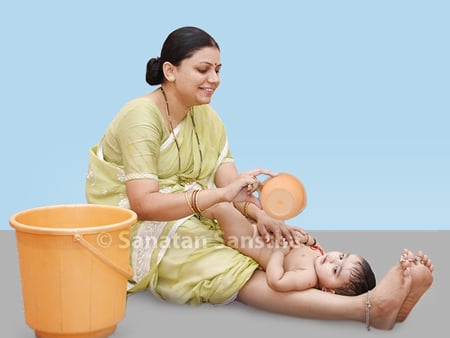
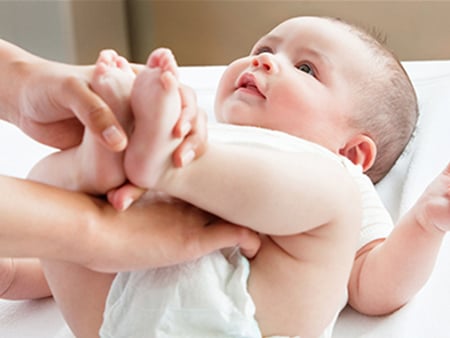
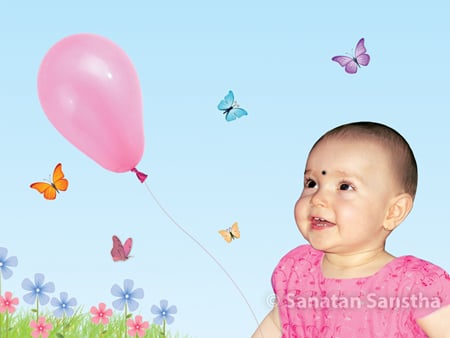
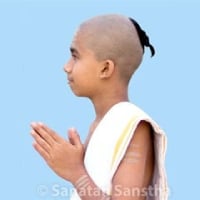 Sanskar Meaning and Definition
Sanskar Meaning and Definition Despite many births as a Human Being, why do Sanskar have to be made again ?
Despite many births as a Human Being, why do Sanskar have to be made again ?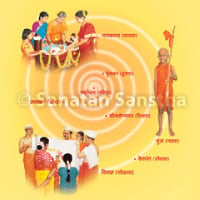 16 Sanskar – Importance and Objectives
16 Sanskar – Importance and Objectives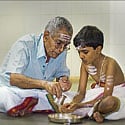 What is the aim of performing Sanskaras ?
What is the aim of performing Sanskaras ?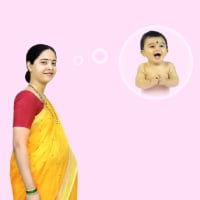 Garbh Sanskar (Pre-birth Sanskar)
Garbh Sanskar (Pre-birth Sanskar)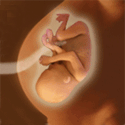 Discipline children before the child’s birth
Discipline children before the child’s birth